Samsung Series 9 900X3A Review
Samsung Series 9 900X3A
Samsung's metal-clad MacBook Air equivalent packs in a 2nd-gen Core i5 processor, USB 3.0, a backlit keyboard, an excellent screen and an amazing touchpad!
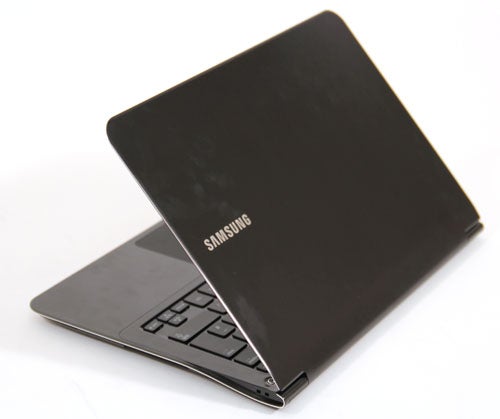
Verdict
Pros
- Thin & light
- Duralumin construction
- Amazing screen
- Sandy Bridge internals
- Superb glass touch pad
Cons
- Not as sexy as the Macbook Air
- Fingerprint magnet
- Expensive
Key Specifications
- Review Price: £1299.00
- 13.3in ultraportable, only 16mm thick
- Intel dual-core Core i5-2537M
- 128GB SSD, 4GB RAM, USB 3.0
- Brushed Duralumin finish
- Samsung quick-boot
Well, it certainly kicks the competition to the curb when it comes to specifications, connectivity and performance. But as it’s aimed at the designer crowd, let’s take a look at its visual appeal and build first. 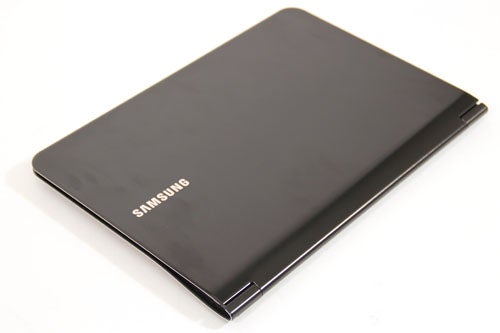
Though Samsung quotes its laptop as being thinner than the latest Air revision, things aren’t quite as straightforward as that. While Apple’s laptop tapers from 17mm to a super-svelte 3mm, Samsung’s effort ‘only’ manages 16.3mm to 15.9 from end to end. Impressive as that might be considering the amount of connectivity and processing power stuffed inside the 900X3A’s chassis, it means that it doesn’t look nearly as slim and minimalistic as its rival.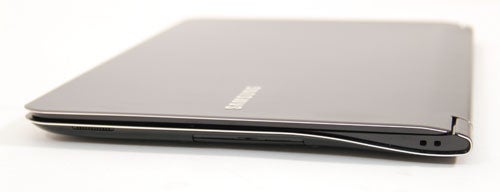
Thankfully it’s also lighter, though again only just: at 1.31kg compared to the Air’s 1.32kg, the difference is not really noticeable.
What about build? For its outer shell and palm rest the 9 Series uses Duralumin, an aluminium alloy that’s twice as strong as the regular stuff, to ensure this is one of the more rugged metal-clad laptops around. However, whether this impression is true or not, it simply doesn’t feel as sturdy in the hand as Apple’s milled aluminium chassis.
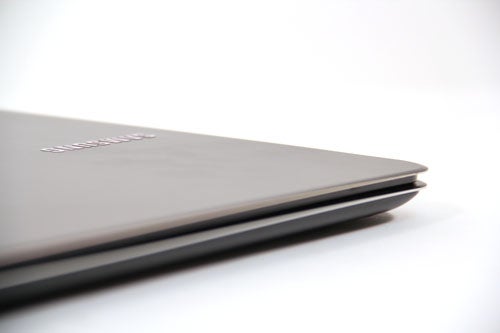
Essentially, the Air feels like it’s been carved out of a single block of metal, while the 900X3A feels like metal panels have been attached to a frame. Don’t get us wrong; the 900X3A is still one of the best-built ultraportables we’ve had through the office, with perfectly fitted parts and barely a hint of flex. And it looks pretty special too, especially given the black livery. 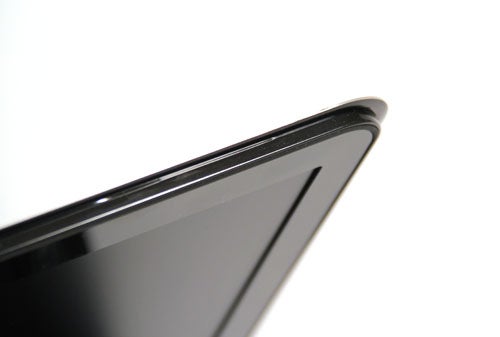
That said, while the lid sports a brushed finish that’s very attractive and the silver Samsung logo set to the side is by no means unsightly, even picking the 900X3A up once will result in a plethora of highly visible fingerprints, and the lid’s hinges also break up the laptop’s smooth lines. Furthermore, the lid’s metal top layer extends over the plastic screen surround below, a design feature that isn’t particularly appealing and gives an incoherent impression. The effect is exacerbated by the edge being left unpainted; a touch that would otherwise be desirable but here does highlight this issue.
Opening the 900X3A up, we’re greeted by a similarly cohesively-challenged interior due again to that recessed screen bezel with its protruding metal outer edge, and Samsung’s decision to use a combination of metal and glossy plastic in the keyboard surround. If it had just used metal only for the entire base, this would be a notably more premium-looking machine. Fingerprints are again a serious issue, and you’ll want to wipe the palm-rests regularly. 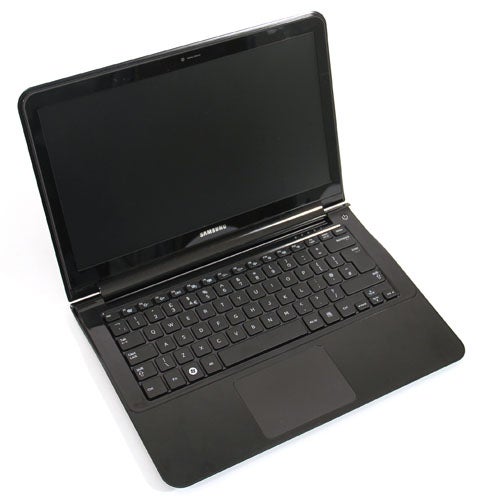
Another annoyance is that the glossy plastics used in the base and the screen’s bezel are different, with the former sporting the extremely subtle gold-flecked effect we saw on many previous Samsung laptops including the premium X360. We’re also not sure about the shiny silver power button – we see what Samsung was trying to achieve but we don’t feel it’s quite worked.
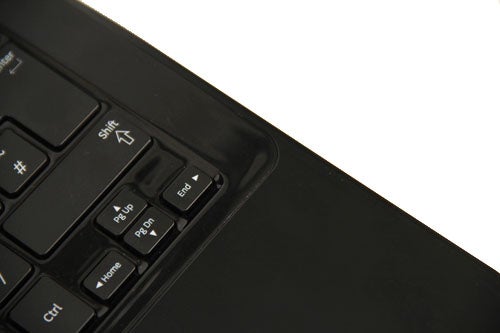
So far, we’ve been quite negative regarding the 900X3A’s looks, but let’s just put things into perspective: this is only in comparison to the Macbook Air, to which no other ultraportable has come even close where sheer style is concerned. On its own merits and when compared to the rest of the Windows laptop market, Samsung’s slick, light and well-built 9 Series is one of the most attractive entrants to be found.
If Samsung were to have used a less fingerprint-prone finish for its Duralumin, removed the protruding edges, used metal for the entire base and etched the power button, its 900X3A would have been a real winner in the design stakes. As is, it’s attractive but not totally lust-worthy.
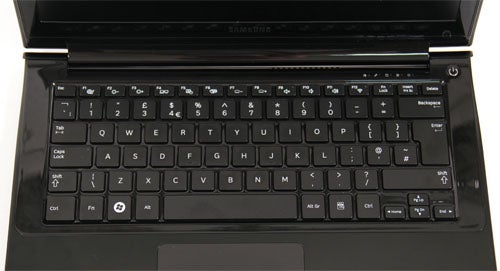
When it comes to usability, things are far less ambiguous. The isolation or Chiclet keyboard features well-spaced, matt black keys. Layout is flawless, though we do miss the X360’s extra function keys which were tucked in to either side of the cursor keys.
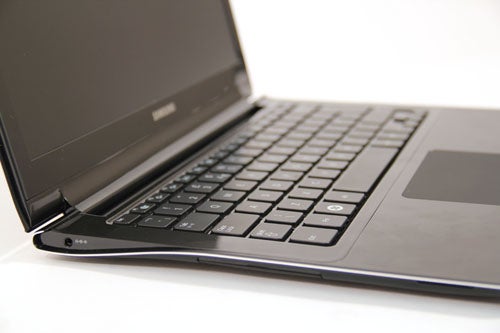
Feedback is shallow but decent considering how little space Samsung has to work with, and the ‘click’ the keys provide is subtle but adequate. Our only complaint is that on a few occasions the touchpad inadvertently registered our palm-movements and changed the cursor position during typing – something that can be managed with the touchpad software.
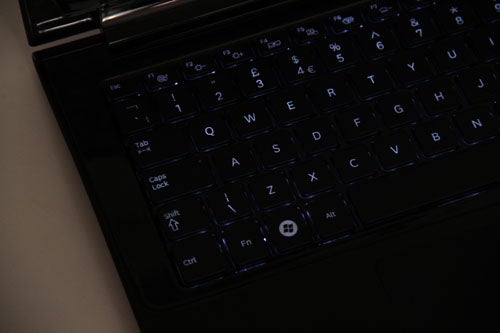
One important advantage the Series 9 has over Apple’s Air is that it offers a backlit keyboard (though the original Macbook Air also had one, Apple removed this feature in its latest refreshes). Samsung’s backlighting system can be controlled manually or automatically by an ambient light sensor which worked flawlessly in our testing, and you can choose between no fewer than seven different brightness settings.
What really stands out from the crowd and its Samsung predecessors, though, is the 900X3A’s superb touchpad. Constructed from a single sheet of unmarked, sand-blasted black glass, the large multi-touch pad looks and feels lovely. Its surface offers the ideal blend of smooth and textured, and is very responsive.
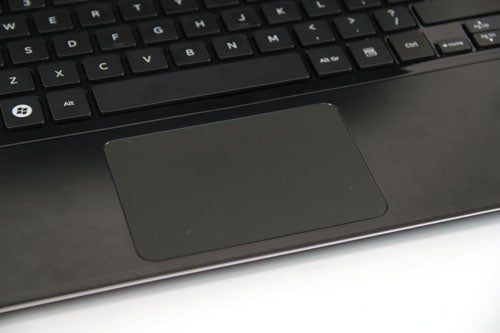
We’ve had serious issues with touchpads integrating their buttons into the touch surface in the past. The HP TouchSmart tm2 is the most problematic example, but Samsung’s own SF310 also caused some annoyance.
However, the Lenovo ThinkPad X220t convinced us it could be done right on a Windows laptop, and now Samsung takes this a step further: we actually prefer the 900X3A’s touchpad to any other we’ve tried, including those with physical buttons. The integrated ‘buttons’ here offer perfect feedback with a positive click and absolutely no dead zone, and the pad never misinterpreted our presses as touches. Brilliant! Compared to the Air’s touchpad, it’s essentially a dead heat, which is really saying something considering how highly we regard that.
From the 900X3A’s class-leading touchpad things only get better, especially when it comes to audio and video. Considering how little space the 1.5W speakers have to play with, the volume levels they produce are nothing short of amazing. Admittedly they distort at maximum and are inevitably lacking in the bass department, but even with the volume turned down we would be more than happy to use these for entertainment. 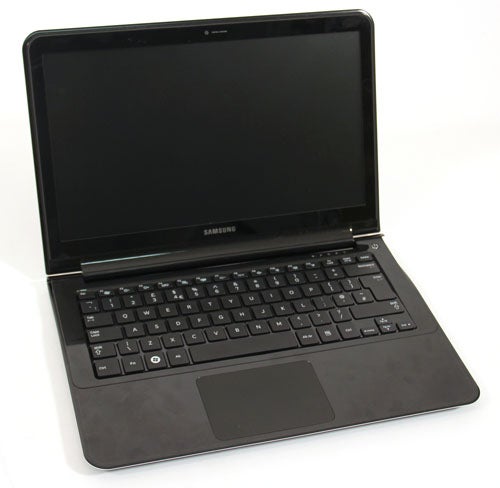
If anything, the screen is even more impressive. In fact, if we hadn’t just reviewed the Lenovo ThinkPad X220t with its lovely IPS-panel display, we would be classing this as the best display we had seen on a small laptop. As you might have guessed from that, the 900X3A still uses good old TN, but this 13.3in panel doesn’t display many of the weaknesses we would usually associate with the technology.
First off, there are its viewing angles. Horizontally, they are close to infinite with hardly any drop-off in contrast or corruption of colour. Even viewing from the top results in minimal contrast and colour shift, leaving the image eminently viewable. Only when viewing from the bottom do things become unwatchable, and on a laptop that’s not a likely scenario.
Then there’s the contrast and backlighting. Backlighting was very even with not a hint of bleed, meaning no distracting pale splotches while viewing dark material. Black levels were also superb, so you can really pick out every detail in dark and gritty movies and games, regardless of how bright you set the backlight.
Speaking of brightness, this is another factor that sets the Samsung apart. At 400 nits, Samsung claims its 900X3A has the brightest display of its size in the world, and after nearly getting our retinas seared off we’re not about to argue. The display can go from almost completely dark for ultra battery saving to painfully bright, which is handy when trying to work or play in a sunny location. 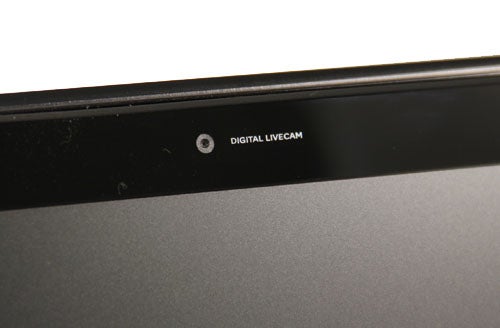
Combined with excellent sharpness, we really can’t think of any negatives with this screen, especially since Samsung has made the excellent decision of going for a matt screen finish to keep reflections to a minimum! We would even say it beats that on the 13.3in Macbook Air, except Apple offers a higher 1,440 x 900 resolution compared to the 900X3A’s 1,366 x 768. This may sound like a deal breaker but in use the Series 9 still feels like it has plenty of desktop real estate.
Rounding off the Series 9’s audio-visual talents is high-definition (720p) webcam, yet another win over its closest rival. 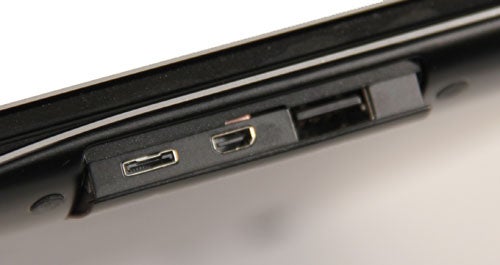
Connectivity is also streets ahead, mainly due to the presence of USB 3.0. Because the laptop’s tapered sides are too thin to accommodate even USB ports without sticking out, Samsung has implemented a rather nifty solution: three ports each on both the left and right side are found when you pull down magnetically-held flaps. We feared these would be a weak point and might break with constant use, but in our testing we found the mechanism to be very sturdy.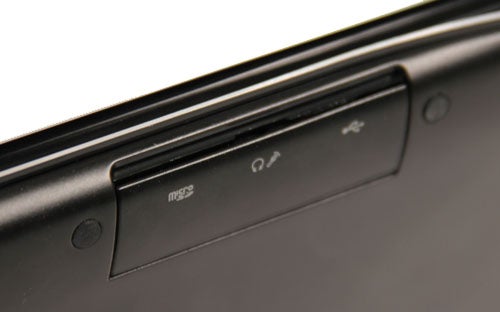
On the left we have a proprietary Gigabit Ethernet port which requires an adapter to hook up, a micro HDMI port and a USB 3.0, or SuperSpeed port. As a further point in its favour, Samsung actually supplies the Ethernet adapter as standard, rather than making it an expensive optional extra as with Apple’s Air.
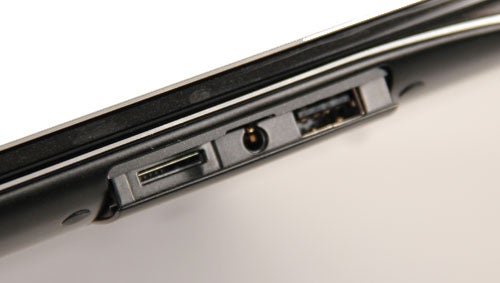
On the right you’ll find a micro-SD card reader, 3.5mm headphone/microphone jack and always-on USB port which can be used to charge devices even if the laptop is turned off. Last but not least, Bluetooth 3.0 and Wi-Fi N are also on board.
The good news continues with the 900X3A’s specifications, with the headline being its use of a dual-core Intel Core i5-2537M. Intel’s new Sandy Bridge low voltage mobile processors provide the best efficiency to performance ratios on the market, so though its standard clock speed is only 1.4GHz, this can turbo clock up to 2.3GHz and utilizes Hyperthreading to provide up to four virtual cores. Its CPU alone makes the 900X3A the most powerful ultraportable in its class, and will completely wipe the floor with the Macbook Air’s paltry 1.86GHz Core 2 Duo, which is by now two generations behind.
The 9 Series also ships with 4GB of RAM as standard, an upgrade for which Apple charges £80. It’s configured in a single stick of 4GB taking up one of the two DIMM slots so Samsung can conceivably offer models with 8GB of RAM in the future. What’s more, though Samsung obviously doesn’t encourage ripping the laptop apart, it may theoretically be possible to upgrade these yourself.
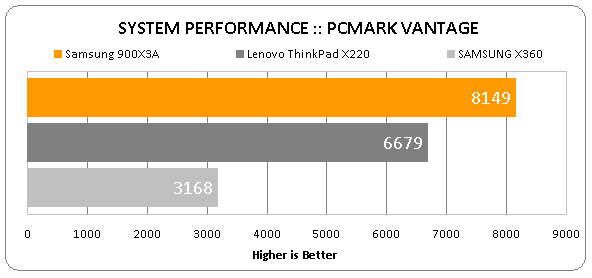
”Thanks to its Sandy Bridge processor paired with a fast 128GB SSD,
the 900X3A trounces most laptops in the performance stakes.”
For storage there’s a capacious 128GB SSD (leaving you with a 98GB capacity as a 21GB section is reserved for a recovery partition), and though the 13.3in Air offers the same capacity, its SSD is likely to be slower due to using an older controller. We’re yet to confirm how this is configured, and thus how easy it might be to upgrade, but we suspect it will be something of a chore to do so.
The only area where the Air still wins out in terms of internal specs is in offering dedicated graphics, albeit in the shape of the rather dated Nvidia GeForce 320M. This is better for light 3D gaming and Photoshop, but Intel’s integrated HD-3000 solution comes out tops for hardware video decoding.
As expected, the OS of choice is Windows 7 Home Premium, and the install is fairly clean with only a few Samsung applications. Samsung’s proprietary fast-booting software ensures that Windows boot times are reduced to as little as a claimed 15 seconds, and in our testing the 900X3A came close with an average of 20 seconds. One minor annoyance is Samsung’s Wireless app which keeps notifying you of the available connections every five minutes, but this can easily be turned off.
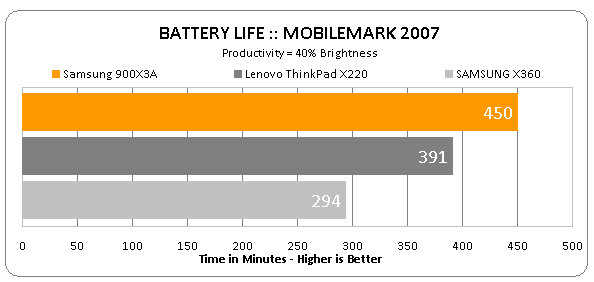
As with the Air, the six-cell, 46Wh battery in the 900X3A is non-removable, so we were hoping Samsung’s quoted battery life of seven hours wasn’t an exaggeration. Again, the Series 9 allayed our fears by providing over four hours with Wi-Fi and Bluetooth enabled, while switching these off and lowering the brightness to the 40 percent equivalent we run the Productivity test at on other laptops resulted in a solid seven hours and 20 minutes.
In general use the 900X3A stays cool, only getting warm on the left and running very quietly even under load. In fact, in anything but the quietest environment it’s completely inaudible.
Finally, we come to value, and this might come as a bit of a shock: the MSRP of the 900X3A is a whopping £1,299! However, to put this seemingly high price into context, keep in mind that Apple charges £1,227 for its Air with 4GB of RAM and an Ethernet adapter. For only £70 more, the Samsung might not look as sexy or offer as high a resolution on its otherwise superior screen, but provides a vastly better processor and platform, fast external connectivity with USB 3.0, a backlit keyboard and, of course, Windows 7.
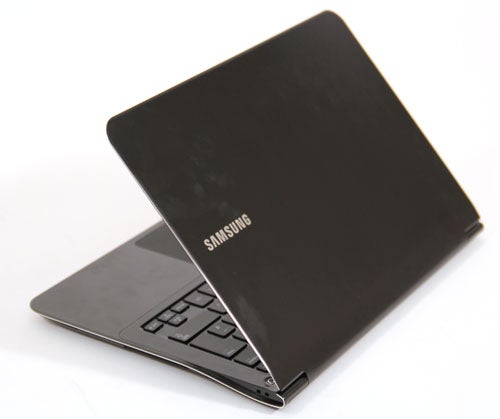
Our only real complaint, aside from the somewhat underwhelming design (again, only when compared to the Macbook Air – among Windows 7 laptops it has few rivals) is its high-maintenance glossy finish, and it would have been nice to see an included cleaning cloth and carrying case when paying this much.
We’re also rather disappointed that the 11in Series 9 is not set to be making it over to this side of the Atlantic; yet another case of Europe being left out in the cold. Hopefully, if the 13in model is successful, Samsung will be persuaded to change its mind.
Verdict
Lighter and arguably thinner than Apple’s Macbook Air, the
13.3in, Series 9 900X3A may not be as pretty and attracts more fingerprints,
but offers far more power and connectivity. Combined with a truly excellent screen,
surprisingly good speakers, the best touchpad on any Windows laptop and decent
battery life, if you’re looking for one of the thinnest and lightest Windows 7
machines around it’s an excellent choice and well worth its high asking price.
How we test laptops
Unlike other sites, we test every laptop we review thoroughly over an extended period of time. We use industry standard tests to compare features properly. We’ll always tell you what we find. We never, ever, accept money to review a product.
Trusted Score
Score in detail
-
Performance 9
-
Design 8
-
Value 7
-
Features 10
-
Battery Life 8

